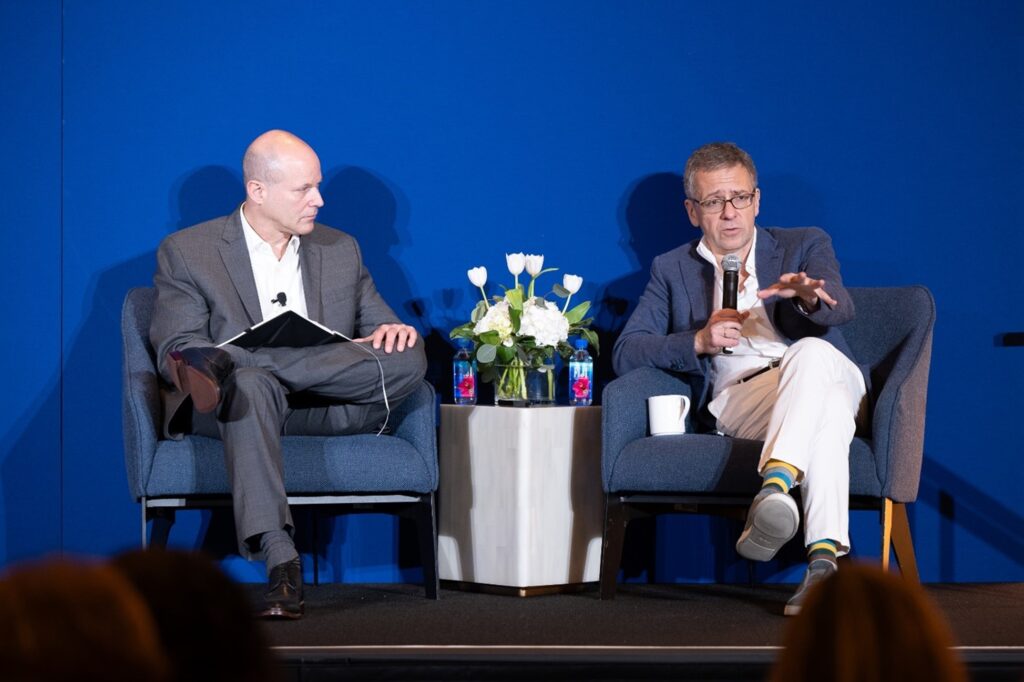The term “forging” emerged as everyone is hammering toward their goals and away from risks.
There is a more positive context in our opportunity to forge ahead as a community. As our challenges become more global and complex, the need for precompetitive cooperation increases.
This is particularly true where we’ve all set ambitious sustainability goals, many of which require ecosystem collaboration to achieve. With our return to a new normal, it would be easy to narrow supply chain’s focus back to its traditional role, managing cost, cash and service, but there are many more strategic roles that operations play for our businesses.
We often manage the majority of our companies’ workforces and can be proof points for the power of diversity, equity and inclusion. We ensure that the value of our company’s superior products pulls through to our end customers’ receipt, and in many cases, use.
The rise of generative AI and its amplification of the value of traditional AI has opened a new frontier alongside increasing physical automation. We are also rethinking the skills and behaviors required by our leaders and employees.
Finally, our businesses need us to build sustainable capacity for competitive long-term advantage. Delivering innovation in our supply chains’ products and services upgrades our partnerships with commercial and product teams.

What did we learn?
We had a stellar lineup of executive speakers at this year’s event from Medtronic, Kenvue, Cisco, Kimberly Clark, U.S. Naval Supply Systems Command and Ralph Lauren.
We were also privileged to be joined by Ian Bremmer, president and founder of Eurasia Group, a leading political risk research and consulting firm, and GZERO Media, a company dedicated to providing intelligent and engaging coverage of international affairs.
In his opening remarks, Bremmer noted that supply chain will be paying a geopolitical tax for years to come. He laid out the current positives (a stronger EU, India’s growing role as East-West bridge, calibrated U.S.-China relations, the promise of AI) in world affairs. And he spelled out the negatives (entrenched Middle East conflict, a potentially partitioned Ukraine or worse, U.S. election-related uncertainties, the risks of AI) in the geopolitical landscape. Our COO/CSCO community spent most of its time in an extended Q&A with Bremmer to answer their most pressing geopolitical questions.

Pictured: Ian Bremmer (right) and Stan Aronow (left), Gartner Supply Chain Leaders Forum, 7 May 2024
Elevating our impact
- Many in the high-tech industry are pursuing common standards for carbon-emission measurement and reporting as an enabler for attaining ambitious net-zero goals. Several CP companies are exploring cross-industry partnerships to recycle and reuse constrained raw materials for packaging.
- Our broader roundtable discussion on sustainability admittedly surfaced more questions than solutions, as the pressure of medium-term goals loomed over the ability to run sustainably profitable businesses. At a higher level, the biggest question raised was, “Who will pay for this transition?” It was clear that governments should play a role through both funding and regulation, but there was also some lament at how transitory most administrations are relative to the time scales required for investment.
- A magical “power of the community” moment occurred when one of our keynote speakers complimented other supply chain leaders in attendance, who had shared learnings through top-to-top peer conversations and in-person team-to-team sessions. During audience Q&A with that speaker, other attendees jumped in with their own examples of community collaboration, which often stretched beyond their own value chains.
Empowering our people
A high-tech company is using a tailored approach to engaging workers in the post-pandemic era for early-in-career, established-in-career, new-to-supply chain and team-leader employees. It has created virtual teams and in-person events centered around “moments that matter” to build connection, fun, recognition and authentic leadership in uncertain times.
- A life sciences company is empowering its teams through an increased focus on employee resource groups and allyship, creating a more direct link between employee actions, metrics and compensation, and leveraging Lean techniques to encourage employees to proactively streamline their work.
- A CP company shared its approach to using AI and machine learning (ML) to solve real-world problems. It has three distinct delivery models leveraging:
1. Citizen data scientists for solving defined problems with defined solutions.
2. A center for machine learning to tackle undefined problems.
3. Productized AI//ML platforms for applying undefined solutions to defined problems.
Its solutions span procurement, manufacturing, logistics and overall knowledge management.
Transforming our businesses
- A life-science leader shared the power of walking the floor at customers to understand opportunities to improve how its supply chain supports them. During one visit it was discovered that the supplier had shipped 19 boxes to the customer when the combined contents might have been condensed to just two.
- A CP operations leader leveraged the spinoff from a parent company as a catalyst for change, resetting its relationship with commercial partners as part of integrated and joint business planning processes. This leader also leveraged process mapping tools to increase its percentage of “no touch” transactions and used a center-led/regionally fed approach to managing digital innovation.
- A high-tech leader discovered the opportunity to offer customers supply chain-as-a-service models in manufacturing, logistics, ESG and security offerings. It has successfully productized a growing number of customer site visits as a means of closing new business.
Originally posted on Gartner





